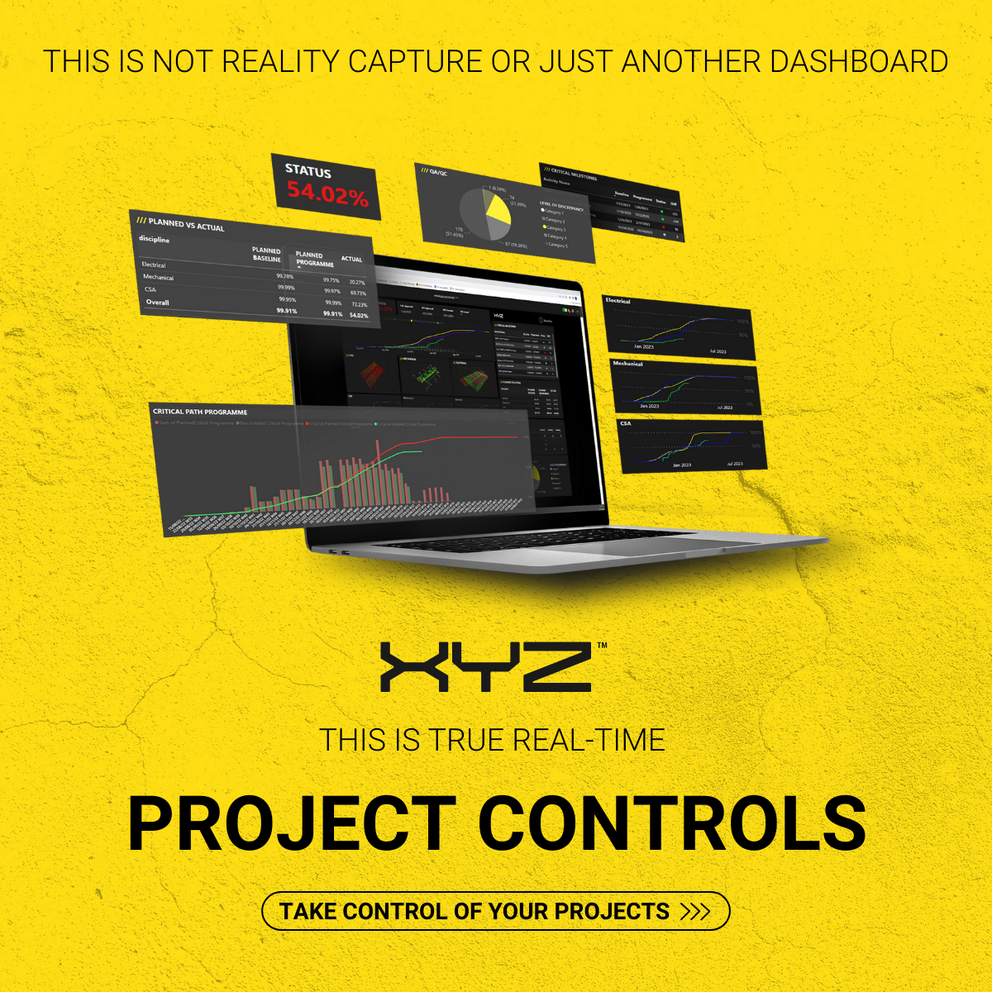-
Services
Services
Find out how we work with our clients and deliver value to construction projects from day one
-
Solutions
Solutions
Discover how all our solutions sync together to deliver construction's most powerful BIM platform to date
-
Built for
Built for
-
Industry
Industry
Understand how we support construction's biggest sectors, and hear from our clients who have experienced the power of XYZ
-
Resources
Resources
Get stuck into all our latest thought leadership, news, reports and industry leading content
-
Company
Company
Dive into what makes XYZ tick, unearth why construction is in our DNA and why we are world leaders in AR solutions

Insights
How the Artificial Intelligence (AI) Arms race is reshaping data center construction
08 August 2024
“AI is going to be the greatest force for economic empowerment we have ever seen.” - Sam Altman, CEO of OpenAI.
The advancements in Artificial Intelligence (AI) are the latest 'great frontier’ for technology. Already, only a few years after it broke into public consciousness, the uses and benefits of AI have shown themselves to be enormous, and we are still in the beginning phase. So early, in fact, that we cannot even see where this technology's limits may lie.
An industry-wide shift
Unsurprisingly, tech giants like Meta and Microsoft have jumped on the AI train at the earliest possible opportunity, leading to an explosive arms race between these companies. Given that ChatGPT could be built based on the available technology from 5 years ago, it is impossible to predict where the massively improved hardware (NVIDIA’s GPU upgrades have been outperforming Moore’s Law for several years) is able to take us now.
Big Tech envisions a future where AI is integrated into every new piece of software. This means AI in every home, every car, and every office, from garage startups to government institutions. With such a lucrative end goal, these tech giants are pouring money into the industry, eager to stake their claim on this new frontier.
In physical terms, this means data centers – the factories of AI. Data center construction has reached an all-time peak because AI devours compute – the ‘resource’ that new data centers provide - like nothing else. The power required for generative video AI, like Sora, is 10,000 times that of a Google search, and the demand will only continue to grow. Mark Zuckerberg has warned that the compute needed to train the next version of Llama – Meta's Large Language Model (LLM) will likely be 10x what it took to build the previous model. The development of these LLMs, such as Llama, ChatGPT and CoPilot, has only become feasible in recent years due to the rapid scaling of available compute. A decade ago, this would have been impossible. With these advances, we are now pushing boundaries that seemed light years away just 10 years ago.
Construction fights to keep up
As a result of the enormous potential upsides, data centers are built with little consideration for cost, and with every consideration for time. If accelerating construction by 6 weeks means an extra $14m in operational revenue, whether it went over budget to get there is immaterial. This ethos is found across the industry. If a piece of land can get the required power and water, companies will pay anything for it. Indeed, the issue of speed to market was what collapsed talks between Oracle and Elon Musk, as Musk believed he could shave priceless months off construction time if he were to go the independent route.
Tier I developers have been aggressively expanding data center capacity due to the incredible demand. Microsoft, for example, is currently pumping $55 billion annually into data center construction. Even if this investment continues for the next three years, it will only allow them to catch up with their projected demand for 2023, as has recently become apparent. This highlights the substantial gap between current construction capacity and the rapidly growing demand. The sheer scale of demand is almost impossible to convey, other than with a broad gesture towards the state of the industry as a whole.
A rocky road ahead
As it currently stands, the data center construction industry cannot keep up with this demand. Mission critical projects like these must be perfectly precise and there is no way around it. Perfect precision takes time. Consequently, the rate of construction has become a limiting factor in the growth of the AI industry (alongside the fact that data centers are pushing national power grids to capacity).
Ensuring everything is built right, first time is the obvious solution to this problem. Rework costs money but, more importantly in this instance, it costs time. Having to redo work that has already been completed is a sunk cost across the industry. Combined with the millimeter-precision requirements in mission critical construction it becomes entirely unsustainable.
There is also a well-documented labor shortage in the industry, and, largely as a byproduct of the secretive way the industry has operated in the past, a real scarcity of traditional data center construction expertise. The obvious outcome of this is that inexperienced leaders have been promoted to experienced roles without being provided the tools, technology and education that would enable them to execute successfully, resulting, unsurprisingly, in significant delays.







